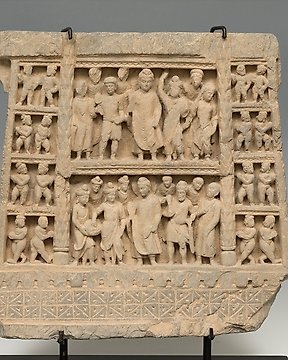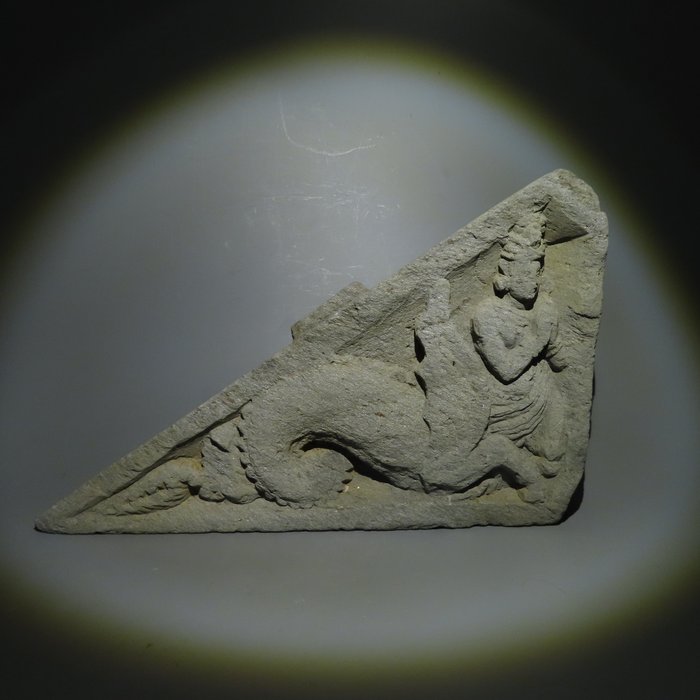
Gandhara Schiefer Relief mit Szenen aus dem Leben Buddhas. 46,3 cm hoch.
Nr. 84029901

Nr. 84029901

Relief with a marine centaur
Gandhara, 1st - 3rd century AD
Schist
37 cm length and 22.5 cm height.
CONDITION: Good condition.
PROVENANCE: Private collection, Germany. Acquired around the 1960's - 1980's.
The historical region of Gandhara, which corresponds to the southeast of present-day Afghanistan, central and northern Pakistan, and northwest India, was a satrapy of the Achaemenid Persian Empire from the 6th century BC, conquered by Alexander the Great, remaining Hellenistic with the Greco-Hindu rulers, until it was annexed to the Kushana Empire (1st - 3rd centuries AD). The Kushans adopted many elements of Hellenistic culture, adapting the Greek alphabet, etc. to their language. It is because of these historical circumstances that Greco-Buddhist art developed in Gandhara, a syncretism between Greek culture and Buddhism. In particular, Hellenistic sculpture was the main source of influence in the art of Gandhara, since it represented the gods in human form. Later the area also had direct relations with the Roman world, through the trade and cultural exchange that developed through the Silk Road, through which Roman coins and sculptures appeared in Gandhara, depicting emperors, high dignitaries and gods. The Greco-Latin influence in this region was key in its artistic development, both for the formal aspects and for the fact that Buddha was represented in human form. In fact, Gandhara will be the first center, together with Mathura, where not only Sakyamuni or historical Buddha is represented in human form, but also other figures of the Buddhist pantheon. This figurative representation will also favor the expansion of Buddhism throughout East Asia.
Notes:
The piece includes authenticity certificate.
The piece includes Spanish Export License.
So kaufen Sie auf Catawiki
1. Etwas Besonderes entdecken
2. Höchstgebot abgeben
3. Sichere Zahlung durchführen